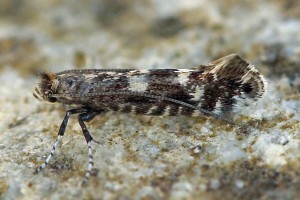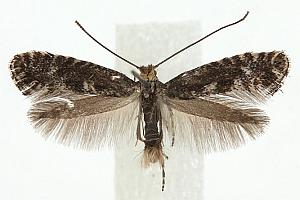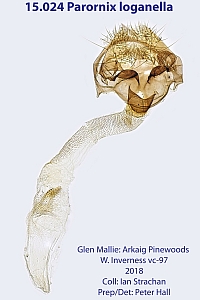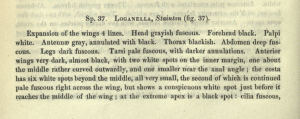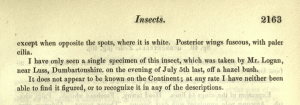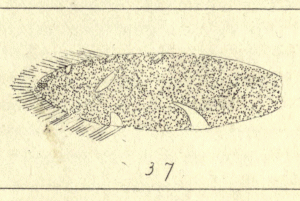Länder:

 +10Kontinente:EU
+10Kontinente:EU


 +10Kontinente:EU
+10Kontinente:EUNeues Layout der Navigation (Beta Test)
LebendfotosDiagnoseGenitalienBiologieNahrung der RaupeWeitere InformationenEtymologie (Namenserklärung)Andere KombinationenFaunistikLiteraturInformationen auf anderen Websites (externe Links)
2. Diagnose
2.1. Männchen
2.2. Weibchen
1: ♀, Finnland, Lappland, Rovaniemen mlk, Raupe 1995 auf Betula, e.l. (fot.: R. Siloaho), leg. M. Mutanen
2.3. Genitalien
2.3.1. Weibchen
2.4. Erstbeschreibung
1-3: Stainton (1848: 2162-2163 + pl. 3 fig. 37) [nach Copyright-freien Scans auf www.biodiversitylibrary.org].
3. Biologie
3.1. Nahrung der Raupe
Die wenigen Angaben zur Blattmine dieser Art betreffen:
- [Betulaceae:] Betula pubescens (Moor-Birke)
- [Betulaceae:] Betula pendula [= Betula alba] (Hänge-Birke)
(Autor: Erwin Rennwald)
4. Weitere Informationen
4.1. Etymologie (Namenserklärung)
Die Art wurde nach ihrem Finder, einem Herrn Logan, benannt.
4.2. Andere Kombinationen
- Argyromiges loganella Stainton, 1848 [Originalkombination]
4.3. Faunistik
In der Erstbeschreibung von Stainton (1848) steht zum locus typicus: "I have only seen a single specimen of this insect, which was taken by Mr. Logan, near Luss, Dumbartonshire on the evening of July 5th last, off a hazel bush." Nach der [Fauna Europaea] kommt die Art in Großbritannien, Irland, Norwegen, Schweden, Finnland, Dänemark, Estland, Lettland und Nord-Russland vor.
4.4. Literatur
- SCHÜTZE (1931): 63
- Erstbeschreibung: Stainton, H. T. (1848): A monograph on the British Argyromiges. — The Zoologist: A Popular Miscellany of Natural History 6: 2079-2097, 2152-2164, pl. 1-3. London (John van Voorst).
- Stainton, H. T. (1864): The natural history of the Tineina 8: I-IX, 1-315, Gracilaria pl. I-V, Ornix pl. I-III. London (John van Voorst) – Paris (Deyrolle) – Berlin (E. S. Mittler und Sohn). — Digitalisat auf archive.org: [272-279], [Ornix pl. II fig. 3].











